On the Road Again: Planning a Smooth Move for Children with Diverse Needs
~ A family relocation toolkit

On the Road. Again.
We’re posted. That’s armed-forces-speak for transferred and Willie-Nelson-esque for “on the road again.” When you’re a military family, change is a constant. With each move, you learn to reinvent yourself, and then you do it all over again. But what’s that like when you have young children? And how about when one or more of those children has diverse needs? What then?
As parents of three young adults, one of whom has autism, my husband and I discovered that the way we approached each transfer—from reaction to anticipation to managing the myriad of details—determined how well the relocation rolled out. Quite simply, our reaction was mirrored by our children. Emotion and reaction are contagious: as parents, our outlook became the template for moving forward.
No question, change is hard—at times incredibly difficult. But there are two features about shaking things up that offer comfort. One. You do it enough and you become very good at change. Two. You don’t hope for a successful transition, you plan for it. That, we can all do.
What are some simple strategies to support each family member, no matter the age, stage or need?
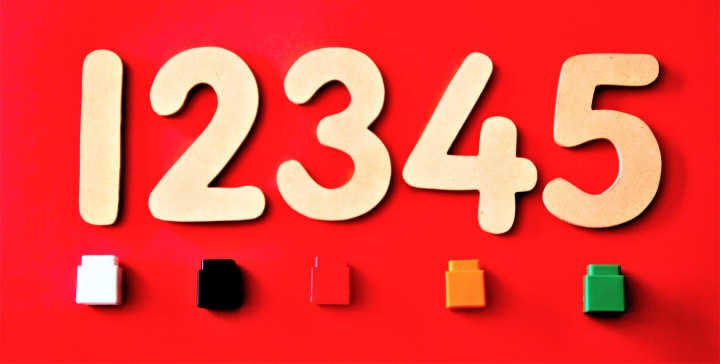
Building Blocks: Plan for Success
Let’s consider five building blocks that constitute our family relocation toolkit:
- Absorbing the Posting Message
- Planning for and Managing the House Hunting Trip (HHT)
- Setting up for Success in School
- Planning for and Managing the Physical Move
- Setting up for Success in the New Home
The suggestions to follow under each building block do not represent what we did each time we moved. Far from it! Like a good wine, our moving strategies improved with time. Our experience—plus tips from other military families—offer up a homegrown menu.
Here is what helped to ease the anxiety around postings for our family. Our plan is structured to meet the needs of our son Erik, with autism—visuals, schedules and concrete approaches. Above all, we aim to insert precisely what change erodes: routine, predictability, structure and consistency. An organized environment is a safe, soothing environment.
What’s good for autism is appreciated by all; however, what works for one family, may or may not be a good fit for another. Think of the suggestions as a menu and select what works.
So, here we go back in time. . . cross-country, with three children in tow.

The Message
If Willie Nelson’s “On the Road Again” represents the lifestyle, Burton Cummings is surely the messenger: “Break It to Them Gently” is the transition soundtrack. When you get your electronic memo, or message, the relocation process has begun. How to tell a child they are uprooting is as important as where.

BUILDING BLOCK 1: Absorbing the Posting Message
1. Map: In our basement rests a map of the world punctured by flag pins highlighting travels and military transfers. With news of a posting, we add a flag to the map showing where we are moving—plus a string connecting our current home and future home. This is the where visual.
2. Chain Link: Erik loves counting down. To show how long, we use construction paper chain links suspended from a curtain rod representing how much time until our spring house hunting trip (HHT), and beyond that, our summer posting date. Each link in the chain is dated, and we make a ceremony of ripping off a link a day. The ever-decreasing chain is a visual for time remaining until we hunt for a house, and later, move.
3. Destination Highlights: Now, the what. We investigate what there is to see and do in the new town or city. We are imagining our new life. Print-outs of tourist activities help to highlight what we can look forward to—both during the HHT and once we have settled in. By reframing the move as an adventure, we tame the upheaval and uncertainty around relocating.
4. Validating Feelings & Bucket List: We don’t deny the stress or sadness around a move. We are uprooting, and deep emotion is real and can be hard to manage. We talk about the things we will miss about our current life, and we create a bucket list of things we want to do in the months before we move—often repeats of favourites.
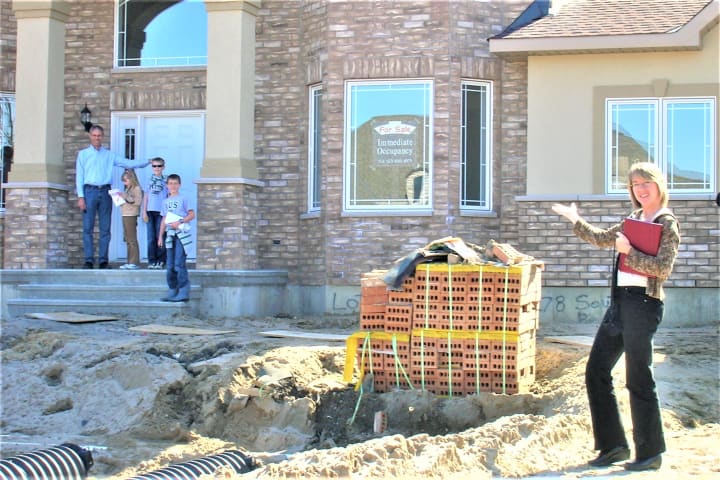
The House Hunting Trip

BUILDING BLOCK 2: Planning for and Managing the House Hunting Trip (HHT)
1. Diverse Needs Planning: If I know a family supporting a child with autism who has lived in our posting destination, I write and ask about resources. First-hand experience and tips combined with information gathered from websites offers a solid starting point. Additionally, for military families, the Military Family Resource Centre (MFRC) is a liaison between families and community resources.
2. House Hunting Check List: We bring our three children on the spring house hunting trip. When they were young, we arranged daycare while we looked at houses. As elementary-aged children, they come along, house to house, so that they are part of the decision-making process. This way, they feel invested in the move versus hijacked by the posting.
I ask each child what is important to them in a home. From our list and theirs, I create an age-appropriate checklist of house features. Our daughter Heather is keen on amenities such as a “cat door”. . . son Scott seeks a driveway conducive to sport; nature nurture is important to Erik. I give each child multiple copies of the list attached to their own clipboard. Involvement in decision-making is a respectful part of moving on.
3. Calendar Plan: We print out a calendar page and sketch in the HHT days to give us an overview. Each morning, we jot down the day's plans in detail, point form on a sticky note. Erik appreciates the predictability and calm that a schedule—even a rough one—delivers. We all feel focussed and organized. I tape the daily plan to the dash of the van, and we tick it off as we move through the day. This is our visual for sequence and time passing.
4. Hotel Features: We choose a HHT hotel with a pool, a water slide (when possible) and a hot breakfast. We print hotel details with pictures before we leave home.
5. HHT Binder: A binder with clear pages keeps everything organized: calendar overview; hotel highlights; HHT house feature checklists; the houses we plan to look at and the attractions in the new town or city. For Erik especially, if he can see it, he can do it. Reviewing the trip details is calming.
6. Plan B: We expect things to go off-track during the HHT and have contingencies should any of the three "time expire" while looking at houses. Blankets, movies, snacks and games in the rented vehicle offer an escape, if needed. There is a quiet retreat in the driveway should the pace become too hectic or too drawn-out.
7. Photo Tour: Once a house is chosen, I ask the realtor if it’s okay to take pictures inside and outside so that we can start to imagine where our furniture will go. Each of our three children takes their own pictures, as well. Their perspective and priorities are often different than ours and from one another’s.
Each child chooses their bedroom so that they can begin to visualize it. This is an important part of the transition because their bedrooms are their sanctuaries. If they can picture it, they can begin to imagine change.
8. Pre-Visits: If time permits, we visit schools, recreation centres and therapy venues at the receiving end, if only to check in and say "Hi, we're on the way in the summer" and pick up resource lists and registration forms. The school visit will be detailed in building block three.
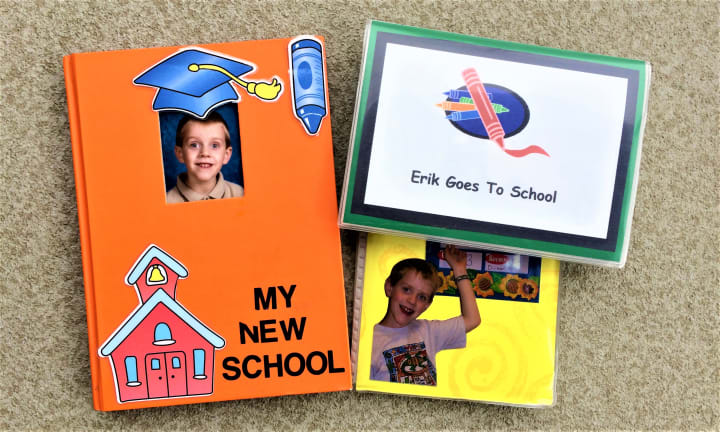
The School

BUILDING BLOCK 3: Setting up for Success in School
1. "A Day in the Life" Video: Before the HHT, we gather needed paperwork from our current school: the IEP (Individualized Education Plan) and the psychological, OT (occupational therapy), SLP (speech and language pathology) reports and recommendations.
The most useful item we have shared with a receiving school is a video compilation highlighting "A Day in the Life of Erik,” a fifteen-minute collection of clips showing Erik following classroom routines; interacting with others and demonstrating his independence and dependence.
Paper Erik and digital Erik are remarkably different. The video clips allow the receiving end to observe the boy outside the label.
2. "My New School" Photo Book: While on the HHT and again in the summer before school starts, we take pictures outside and inside the new school and make a small, hard-copy transition book for Erik to flip through. This collection can also be electronic, showing every nuance of the new school from the outside to the inside, to classroom organization, routines, expectations, work stations, play options, student work on the wall, staff, safe havens, washrooms, drinking fountain locations—even heat ducts and light switches. Familiarity invites functionality.
3. School Communication: We gather school newspapers, newsletters and information about clubs to get a feel for the leadership, climate, activities and spirit.
4. Class Picture: A labelled class picture from the new school indicating who may be in your child's class in September is a helpful visual. Memorizing names and faces in advance takes the mystery out of new classmates.
5. Meet the Staff: We aim to meet the classroom teachers, principals and the Learning Support Teacher (LST) during the house hunting trip. The more information we can gather and share in the spring, the better for all. What we cannot provide in April, we send by June.
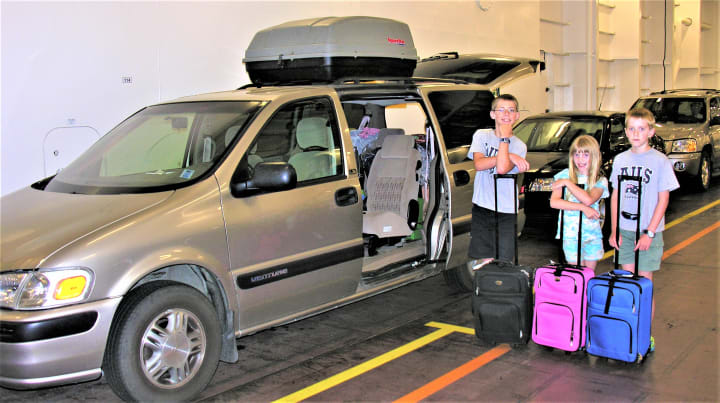
The Move

BUILDING BLOCK 4: Planning for and Managing the Physical Move
1. Countdown Chain: We continue to count down to the day of departure. This helps us commit to doing all that we want and need to do before the packers arrive.
2. Pre-Pack: Our three pre-pack their bedroom treasures by sorting items into Ziploc bags and bins. This way, when the packers began to "wrap up their bedrooms" it will be less chaotic, and items will be easier to unpack at the receiving end.
3. Road Trip Packing: We make a generic packing list and each child packs their own travel bag. Our children feel responsible packing their own bags, and we check in to make sure everything they need for our road trip is included. A backpack of favourite books, games, hand fidgets, music and movies is also something each child selects and packs.
4. Travel Binder: We update the binder with the summer trip details: a calendar itinerary; a map of the country with daily destinations and driving distances; sights to see en route; hotel bookings and any other details we need. The binder is reassuring for all of us.
5. Van Equals Home: Our van is our home between homes: our temporary, rolling safe-haven. We make it cozy and exciting, stocking up on snacks, entertainment, blankets and pillows, things to look at (magazines, travel games like Spot the . . .) and a central movie device (or more recently, individual devices). We also include sensory items like weighted lap cushions and fidget toys. Creating a responsive oasis is grounding.
6. Travel Routine: We create a daily routine that works for the family, typically: a mid-morning departure with looking-out-the-window time; a break with a snack and a stretch; movie one; lunch; sleep; movie two; arrive at planned destination (pre-booked). On select days, we take in tourist highlights so that the transfer feels like a vacation.
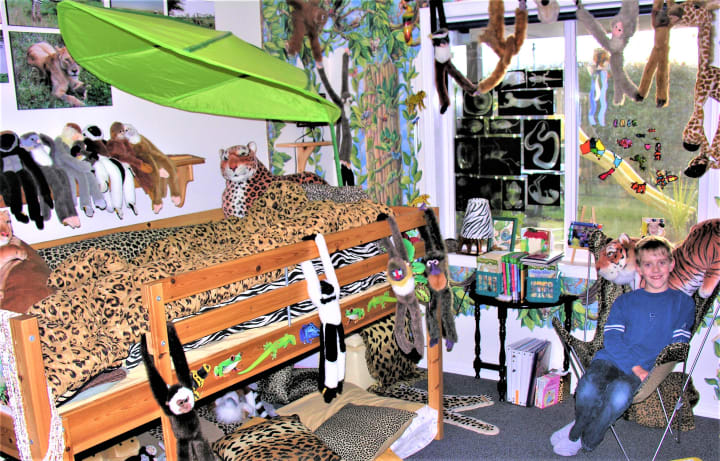
The Home

BUILDING BLOCK 5: Setting up the Home for Success
1. Bedroom: We set Erik's new bedroom up so that it is as close as possible to his previous bedroom. We replicate what has worked and add updates, as needed. For two postings, his bedroom was a leafy green jungle sanctuary. Our daughter Heather often opts for a fresh look. Our son Scott is a minimalist: proximity to a fridge is appreciated.
2. Oases within the Oasis: Erik enjoys enclosed, calming spaces like tents and closets, so we create these sensory safe spots in the house when everything is new and different—and possibly overwhelming. Decorated bedroom closets become club houses; cushioned spaces under bunk beds and themed tents are inviting refuges. Escape areas help to process change.
3. Home Routines, Systems & Traditions: We keep the days as structured as possible in the swirl of moving and unpacking. A roughed-in schedule helps appeal to Erik's need for consistency and predictability. We work in family traditions from the former house such as game and movie nights and Sunday morning pancake breakfasts. Traditions are comforting and create a predictable pattern. In addition, we replicate systems that have worked well such as a kitchen snack drawer, a chore chart, latest greatest achievement frames—all of which feed the need for structure, familiarity and concrete, visual learning.
4. Tourist in Our New Town: To feel less bound to a house of boxes, we make an effort to "see and do" in our new location. Playing tourist in our own town invites a spirit of adventure. We aim to cast the transition experience in curiosity and discovery.
The End and the Beginning
Consistent methodologies run through the five building blocks: visuals, advance organizers, and routines and predictability at each step to cultivate a safe environment and an investment in the moving process. These threads are respectful supports for all children and are critical for those who thrive in organized and consistent environments.
The relocation toolkit may help to ease the anxiety around moving. The practical strategies allow for a smooth, structured transition that can be memorable and fun. If emotion is contagious, so, too, is reaction. And when a family is in tune, the moving experience can be a joyful journey. And that is noteworthy.
____________________________________________________
Teresa Hedley is the author of What’s Not Allowed? A Family Journey with Autism (Wintertickle Press, 2020), a memoir which offers an uplifting approach to mining the best version of each of us, autism or not. Teresa is also an educator and a curriculum designer. Teaching stints in Canada, Japan, Greece, Spain and Germany have shaped her perspective and inform her writing. Teresa and son Erik co-wrote a twenty-article series for Autism Matters magazine, “I Have Autism and I Need Your Help.” Additionally, Teresa worked directly with families and school boards in Ottawa as an autism consultant and advocate. She and her family live and play on Vancouver Island.
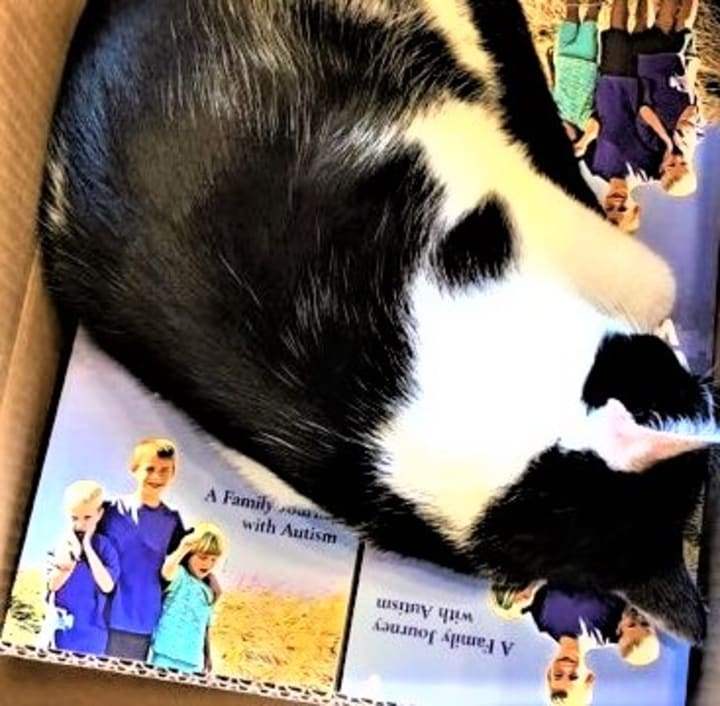
Military Family Resource - The Hedley Family: On Caring for a Child with Autism
About the Creator
Teresa Hedley
Greetings from the beach... where you'll find me exploring, reading, writing, hiking and kayaking with our local seals. I'm excited to share my stories with you via What's Not Allowed? A Family Journey With Autism. Now on Amazon + Chapters




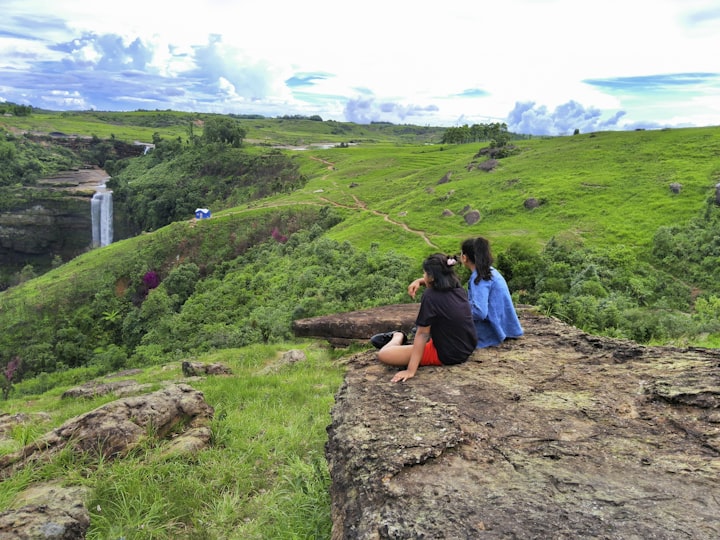

Comments
There are no comments for this story
Be the first to respond and start the conversation.